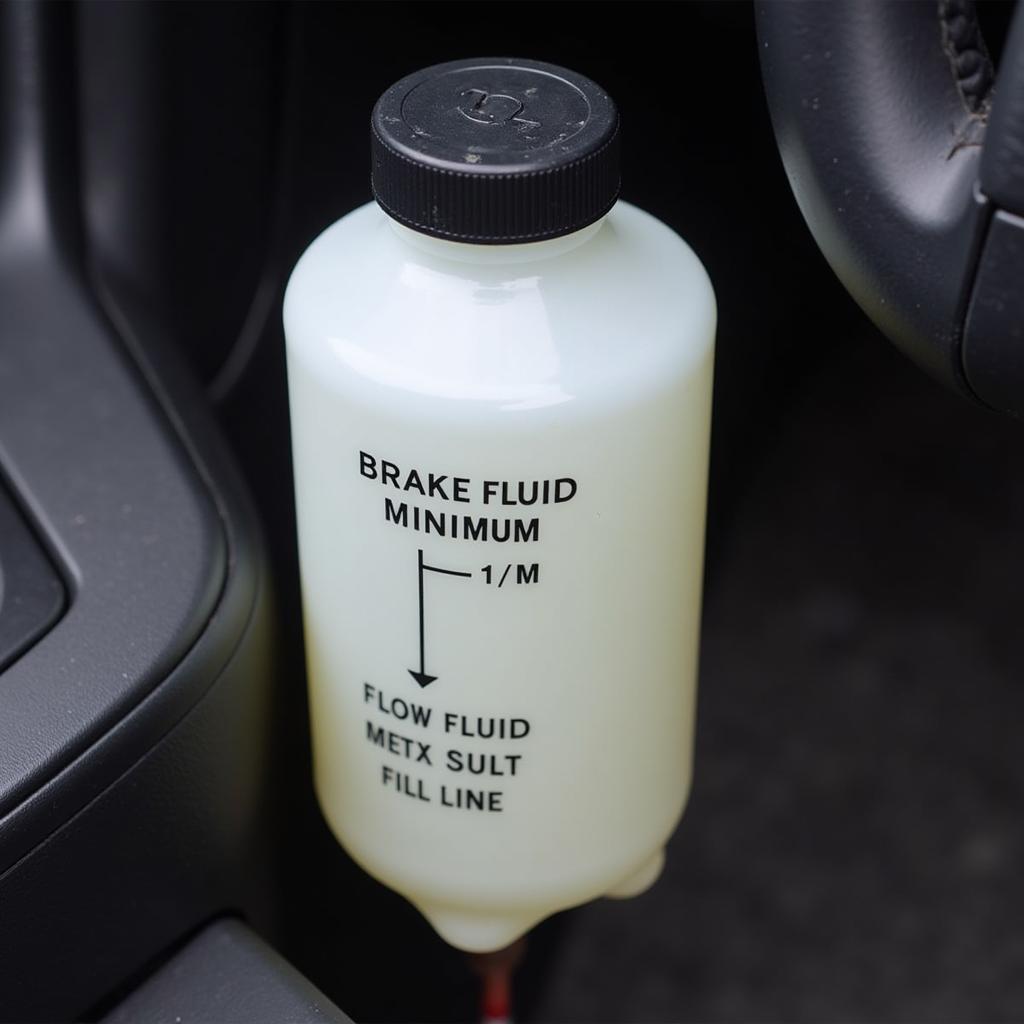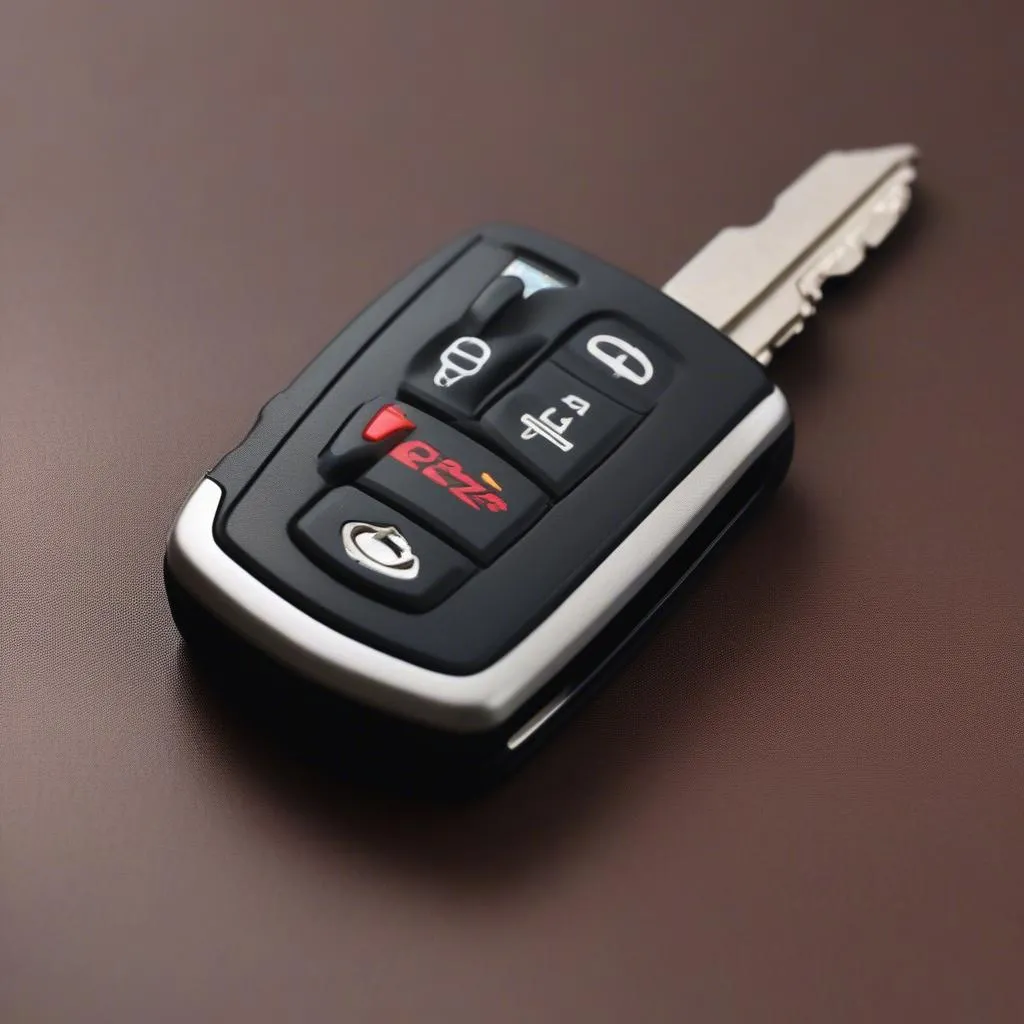The brake wear warning light is a crucial indicator of your vehicle’s safety and performance. When it illuminates on your dashboard, it signals a potential issue with your braking system that requires immediate attention. Ignoring this warning could lead to decreased braking efficiency and even dangerous driving situations.
Understanding Your Brake Wear Warning Light
This light is directly connected to your brake pads. Most vehicles are equipped with sensors in the brake pads that monitor their thickness. When the brake pad material wears down to a certain level, the sensor triggers the warning light on your dashboard.
 Brake Pad Wear Sensor
Brake Pad Wear Sensor
Common Causes of a Brake Wear Warning Light
While worn brake pads are the most common culprit, several other factors can trigger the brake wear warning light:
- Worn brake pads: As mentioned earlier, this is the most frequent reason.
- Damaged brake pad sensor: The sensor itself could be faulty or damaged.
- Low brake fluid: A leak in your brake lines can lead to low brake fluid, which also triggers the warning light.
- Electrical issue: In some cases, a short circuit or wiring problem in the braking system can cause a false warning.
 Low Brake Fluid Reservoir
Low Brake Fluid Reservoir
What to Do When Your Brake Wear Warning Light Turns On
- Don’t Panic, But Don’t Ignore It: A brake wear warning light doesn’t necessarily mean you need to stop driving immediately. However, it does require prompt action.
- Check Your Brake Fluid: This is a quick visual inspection that can rule out a serious issue. If the fluid level is low, there might be a leak.
- Schedule an Inspection: Whether you suspect worn brake pads, a fluid leak, or an electrical issue, it’s crucial to have your vehicle inspected by a qualified mechanic as soon as possible.
mercedes-benz-brake-wear-warning-light-reset
Can I Still Drive with the Brake Wear Warning Light On?
While you might be able to drive short distances, it’s not advisable. Driving with worn brake pads or other braking system issues compromises your safety and can lead to further damage, resulting in more costly repairs.
How Long Do Brake Pads Last?
The lifespan of brake pads varies greatly depending on driving style, vehicle type, and road conditions. Generally, they can last anywhere between 25,000 to 70,000 miles.
Brake Wear Warning Light vs. Brake System Warning Light
It’s important to distinguish between the brake wear warning light and the brake system warning light, which usually appears as a red exclamation mark within a circle. The latter usually signifies a more serious issue like complete brake failure or a problem with the ABS system and requires immediate attention.
Preventative Measures for Optimal Brake Health
- Regular Brake Inspections: Have your brakes inspected by a mechanic at least once a year or as recommended in your vehicle owner’s manual.
- Smooth Driving Habits: Avoid hard braking whenever possible. This puts less strain on your brake pads and extends their lifespan.
- Quality Brake Pads: When it’s time for replacements, invest in high-quality brake pads from reputable brands.
ford-escape-2008-hybrid-check-brake-system-warning
Conclusion
The brake wear warning light is a crucial safety feature in your vehicle. Addressing the issue promptly can save you from potential accidents and costly repairs down the line. If you notice this light illuminated on your dashboard, schedule an inspection with a qualified mechanic at your earliest convenience. Regular maintenance and responsible driving habits are key to ensuring your brakes perform optimally and keep you safe on the road.



